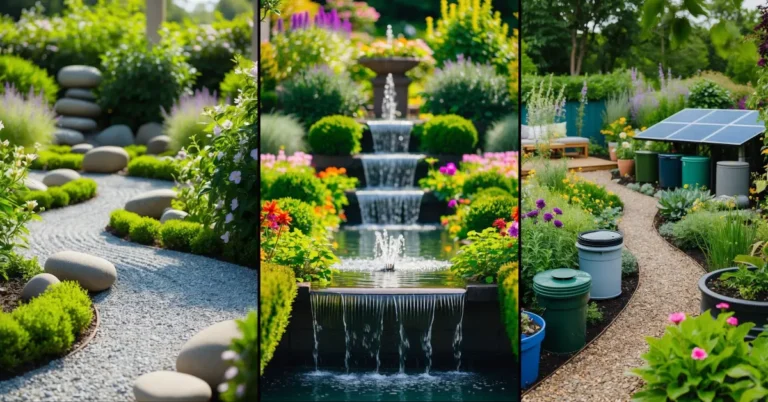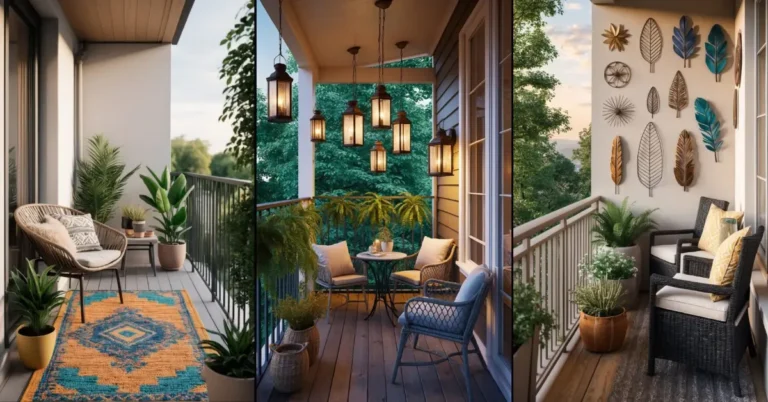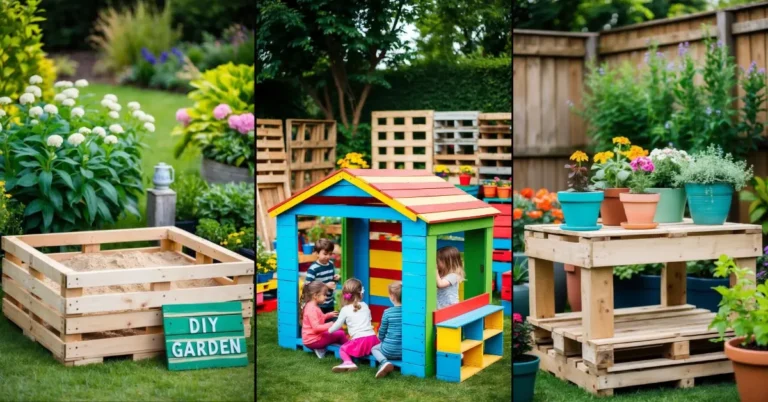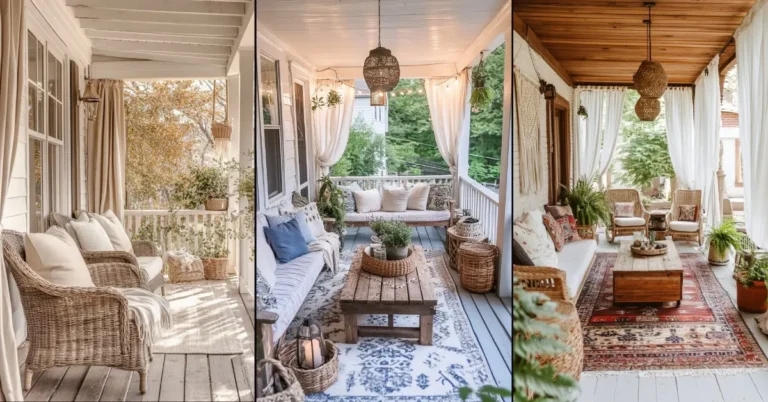12 Gorgeous Gravel Patios Ideas!
Gravel patios are a practical and visually appealing way to upgrade your outdoor space.
They fit into so many styles and yard layouts, so whether your garden’s modern or rustic, there’s probably a gravel option that’ll work.

Choosing gravel means you get a patio that’s both attractive and easy to maintain. Here are twelve gravel patio ideas to spark your next backyard project.
1) Pea Gravel Patio with Modern Seating Area

Pairing pea gravel with sleek, modern seating gives a fresh, clean look. The gravel’s smooth feel is surprisingly comfy under bare feet and works great with minimalist furniture.
Arrange your tables and chairs to carve out a clear dining or lounging spot. This combo brings together rustic charm and modern function. For a peek at the vibe, check out this rustic and modern pea gravel patio.
2) Decomposed Granite Pathway Adjacent to Gravel Patio
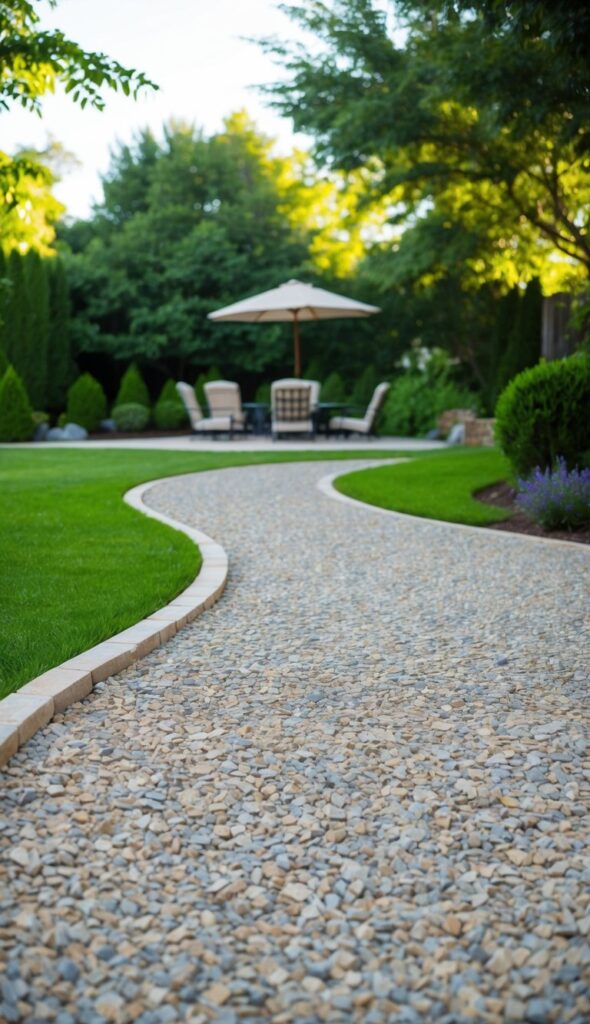
Adding a decomposed granite pathway near your gravel patio gives you a stable surface that won’t shift around as much as pea gravel. The transition between the two materials just looks natural and easy on the eyes.
Decomposed granite is tough and doesn’t need much upkeep. If you want to keep everything tidy, steel edging can help. Curious about more ideas? Take a look at decomposed granite patio designs.
3) Flagstone and Gravel Combination Patio

Mixing flagstone and gravel is a stylish move. Set flagstones into a flexible gravel base so they can shift a bit and water can drain away easily.
This setup gives you a solid walking surface that still feels natural. It’s also way less work than cemented joints. Need more info on what to use underneath? Here’s a guide to flagstone base options.
4) Circular Gravel Patio with Fire Pit Center
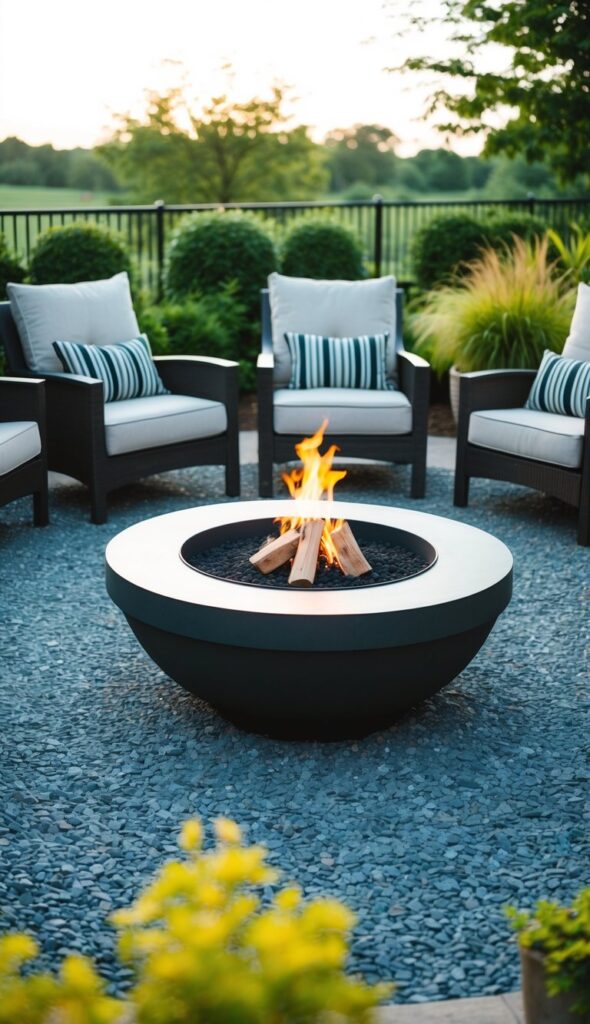
Designing a circular gravel patio with a fire pit at the center just begs for good conversation. The round shape makes the seating feel naturally connected.
Pea gravel works well here for comfort and drainage. Toss in some Adirondack chairs or benches, and you’ve got a setup that’s both functional and inviting. For more on this idea, check out a DIY fire pit area with pea gravel.
5) Brick-edged Gravel Patio for Defined Space

Brick edging is a classic way to keep your gravel patio neat. It keeps the gravel from wandering and gives the space a crisp, finished edge.
The contrast between the brick and gravel just pops visually. It’s straightforward and looks great. For more on mixing brick with gravel, here’s a pea gravel patio with brick edging example.
6) Slate Gravel Patio with Minimalist Furniture

Slate gravel brings a sleek, modern vibe, especially with minimalist furniture. Those dark tones really make clean-lined seating stand out.
Keep the furniture sparse for an open feel. This look is practical and never feels cluttered. If you’re curious, browse more gravel patio inspiration.
7) Crushed Stone Patio with Raised Planters
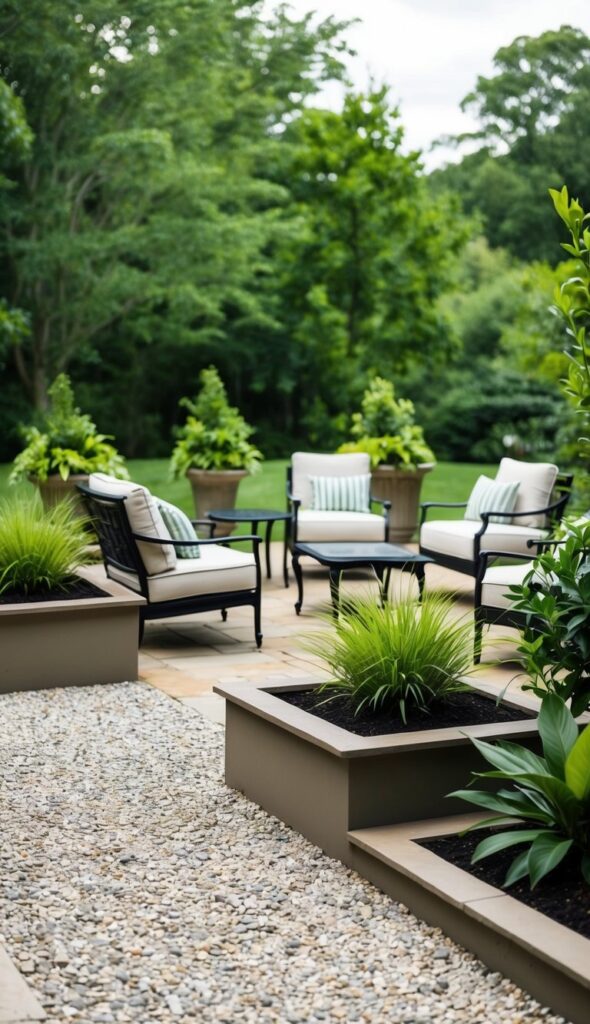
Raised planters on a crushed stone patio bring greenery right up to where you’re sitting. It’s a tidy, organized look that works for both modern and rustic spaces.
The crushed stone drains well and feels stable underfoot. For more ideas, check out gravel patio designs.
8) Rustic Gravel Patio with Wooden Bench
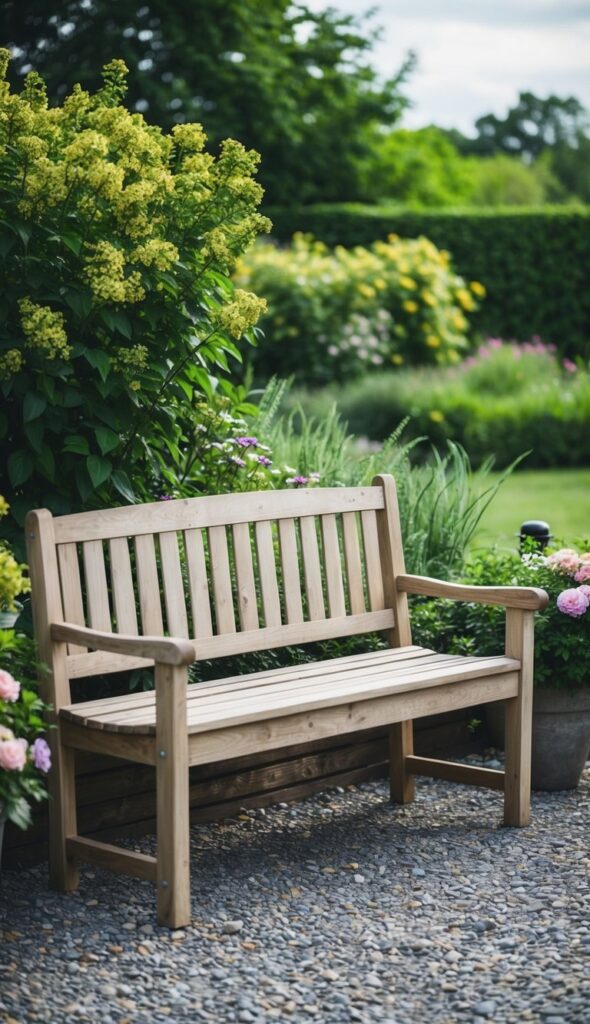
A rustic wooden bench on gravel is simple but super inviting. The mix of textures just feels right for a relaxed outdoor spot.
This setup is easy to maintain and fits into almost any garden style. A few potted plants can make it even cozier. For more, see rustic gravel patio inspirations.
9) Concrete Pavers Interspersed with Gravel
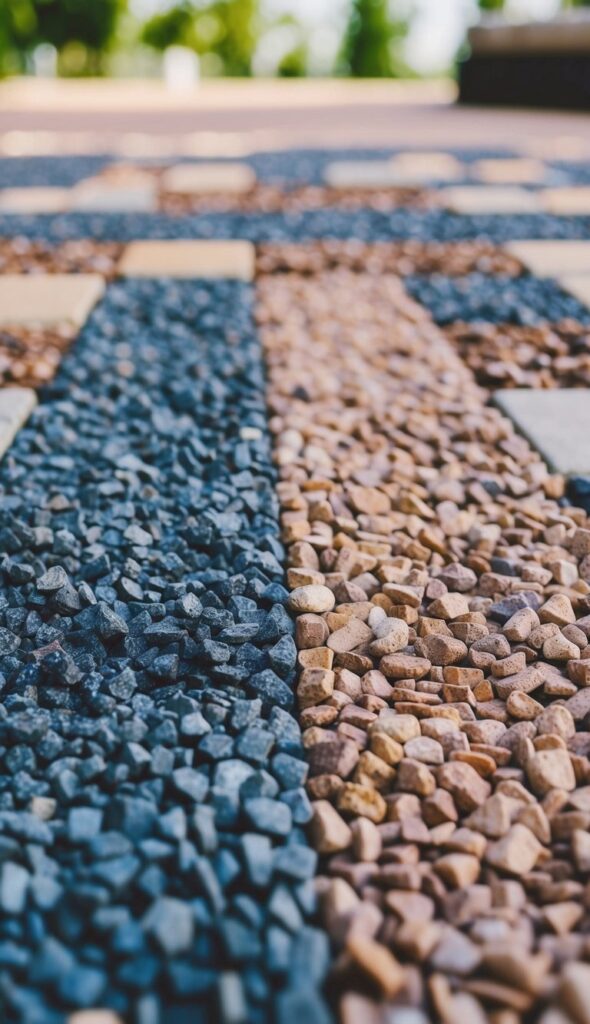
Combining concrete pavers with gravel gives you a clean, structured patio. The pavers are solid underfoot, and the gravel in between helps with drainage.
You can play with patterns and shapes using the pavers, which is honestly kind of fun. For inspiration, check out how to make a modern patio with pavers and pea gravel.
10) Multi-colored Gravel Patio for Visual Interest
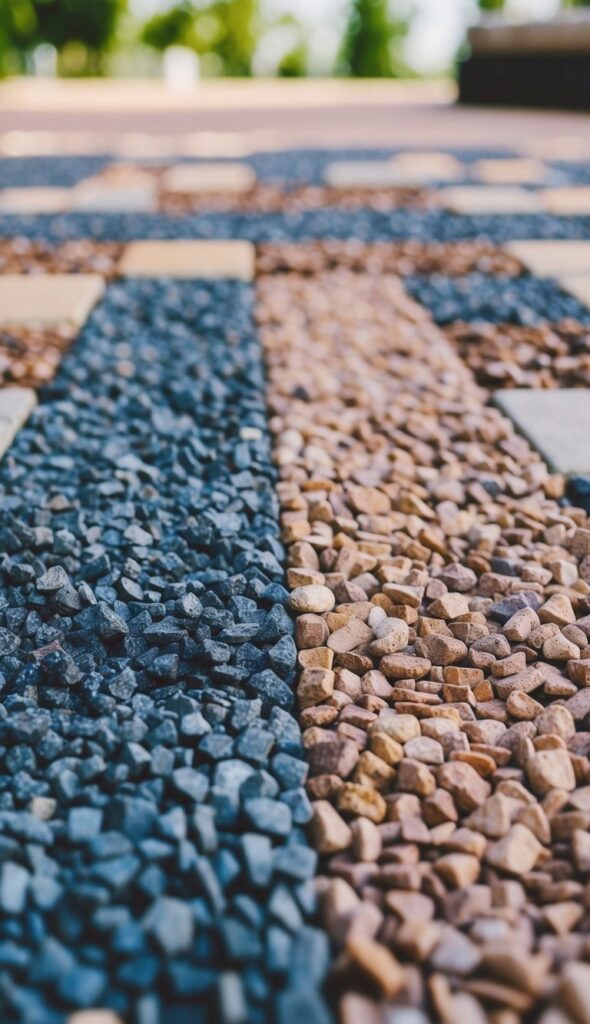
Mixing different colors of gravel brings a ton of visual interest to your patio. It adds depth and texture without needing fancy patterns.
Plus, the variety hides dirt and wear better than a single color. Try choosing shades that match your home’s exterior. Need more ideas? Take a look at 16 Gorgeous Gravel Patio Ideas.
11) Gravel Patio with Outdoor Dining Set
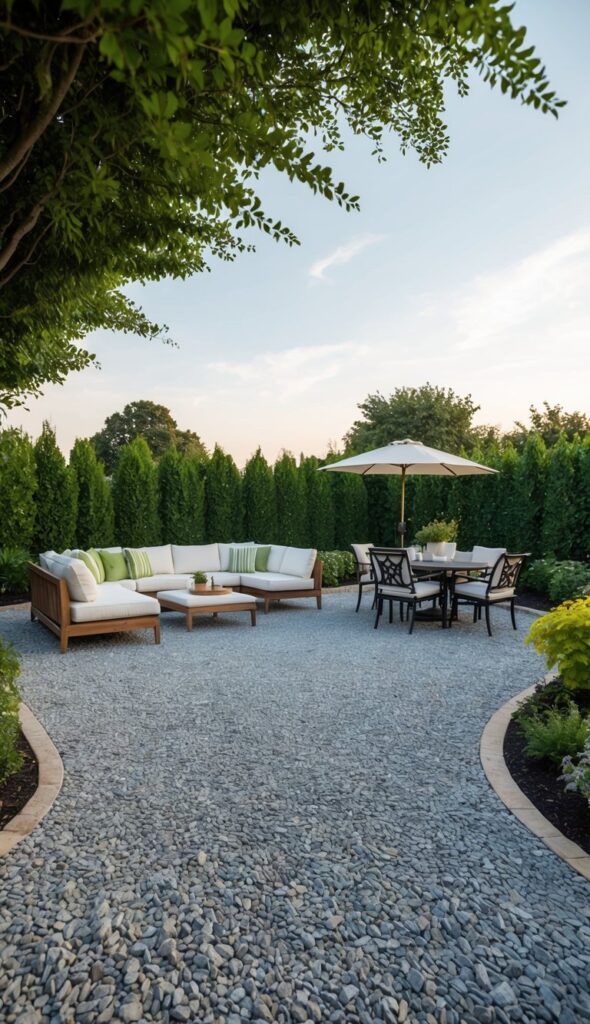
A gravel patio with an outdoor dining set turns your backyard into a spot for meals and easy gatherings. It’s practical and always feels welcoming.
Pick sturdy furniture that works with the gravel’s look. An umbrella or some kind of shade makes it way more comfortable, especially in summer. For ideas, see a pea gravel outdoor patio dining area.
12) Low-maintenance Gravel Patio with Permeable Base

Building your gravel patio over a permeable base is a smart move for drainage. It keeps puddles away and helps prevent erosion, so you’ll spend less time doing upkeep.
This approach encourages water to flow through while keeping the gravel steady. If you want to know how it’s done, check out this permeable gravel base guide.
Design Principles for Gravel Patios
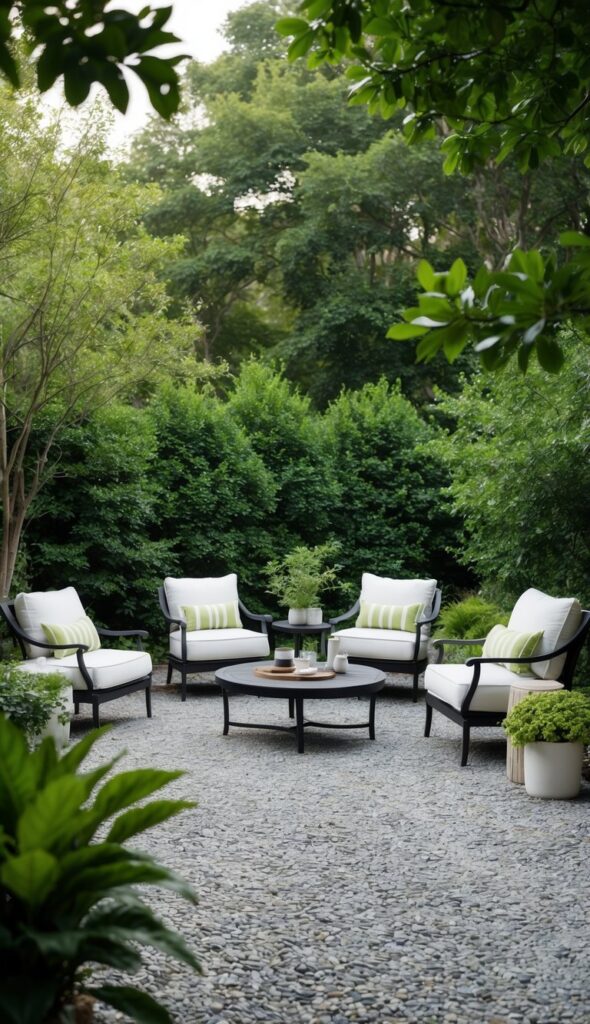
When you’re planning a gravel patio, you’ve got to think about materials, how you’ll keep everything in place, and how water will drain. These choices really affect how your patio holds up and how much work it’ll need later.
Selecting the Right Gravel Type
Pick gravel by considering size, feel, and color to match what you want from your patio. Pea gravel is smooth and comfy, great for spots where you’ll be sitting or walking barefoot.
Crushed stone is more stable and compacts nicely, so it’s good for paths or driveways. Color matters too—lighter gravel stays cooler, while dark shades absorb heat and make the space feel more defined.
Try to avoid sharp or big stones that’ll hurt your feet. Sometimes, a mix of bigger base gravel and a layer of smaller stuff on top works best for drainage and keeping weeds down.
Incorporating Edging and Borders
Edging keeps gravel where it belongs and gives your patio a finished shape. You’ve got options: metal, stone, or pressure-treated wood all work well.
Metal edging looks clean and doesn’t warp. Stone blends in with the garden, but it can get pricey.
Install edging a little below ground level so the gravel sits flush and doesn’t spill everywhere. Use stakes or anchors to keep it solid for the long haul.
Edging also helps keep grass and dirt from creeping onto your patio. Pick a height that’s a couple inches higher than the gravel surface for the best results.
Optimal Drainage Techniques
Good drainage keeps standing water at bay and protects your patio’s structure. Start by digging out the area to remove topsoil.
Create a gentle slope—about 1/8 inch per foot—so water moves away from your house. It doesn’t have to be perfect, but aim for a noticeable tilt.
Lay down a base of coarse gravel or crushed stone, at least 4 to 6 inches thick. This gives water somewhere to go.
Put landscape fabric underneath the gravel to stop weeds, but don’t worry—it won’t block drainage. That’s the idea, anyway.
Don’t overdo it with the compactor. If you pack the base too tightly, water can’t flow as well, so just a light tamp will do.
If you live where storms are a regular headache, think about adding a French drain or a dry well nearby. It’s not always necessary, but it can save you hassle.
Need some inspiration? Check out gravel patio design ideas at Better Homes & Gardens.
Maintaining Your Gravel Patio
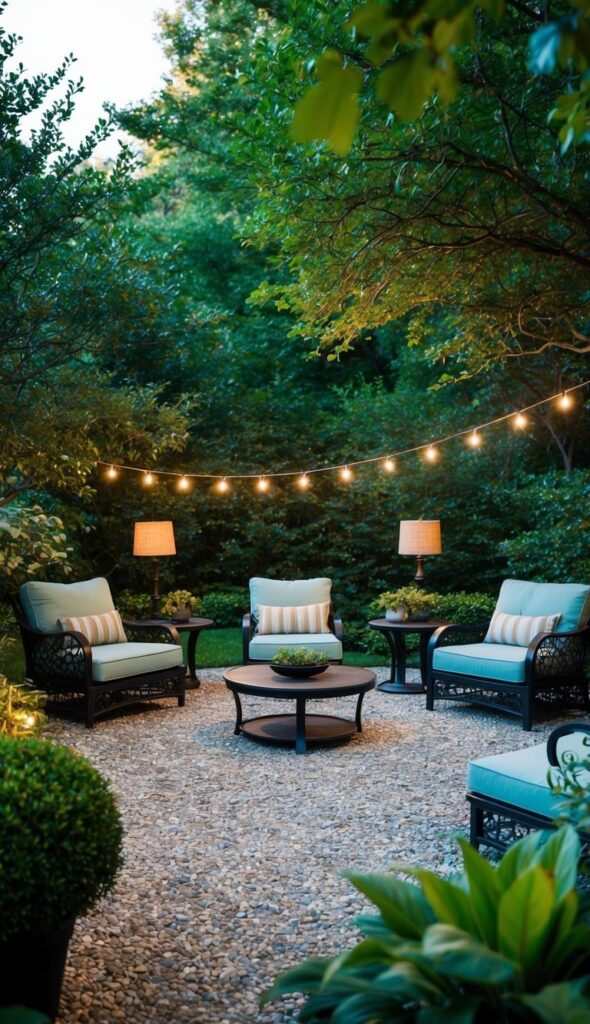
Keeping a gravel patio looking good means regular attention to debris and weeds. It’s not hard, but you do have to keep at it.
Each season brings its own challenges, so your approach might shift a bit. The main thing is to stay ahead of unwanted plant growth and mess.
Seasonal Upkeep Strategies
In spring and fall, grab a natural-bristle broom and sweep away leaves or debris. This helps avoid moving gravel around too much.
Every few weeks, give the surface a quick rake to even out the stones. It’s oddly satisfying, honestly.
After a big rain, take a look for spots where gravel’s washed away. Just add more stones where you need them.
In winter, skip the salt and harsh chemicals—they’ll mess with the gravel and the base underneath. Not worth the trouble.
Give your patio a good once-over each year. Spotting compaction or drainage problems early can save you money and headaches down the line.
Weed Prevention Methods
Weeds love to sneak up through gravel. Laying down a landscape fabric or some kind of weed barrier before you pour the gravel is honestly a must.
Grab a gravel rake every so often and give the area a good stir. That little bit of disruption can stop new weed seedlings before they get any ideas.
Chemical treatments—like pre-emergent herbicides—work best if you get them down in early spring. Be careful and stick to the label, though, because you really don’t want to hurt your other plants by accident.
Manual removal is just part of the deal for weeds that have already taken hold. You can pull them up by hand or use a hoe to get just under the surface and yank out the roots, all without making a mess of your gravel.
If you keep at it, weeds won’t stand much of a chance and your patio will look tidy. For more thoughts, check out maintaining gravel patios and weed control methods.

